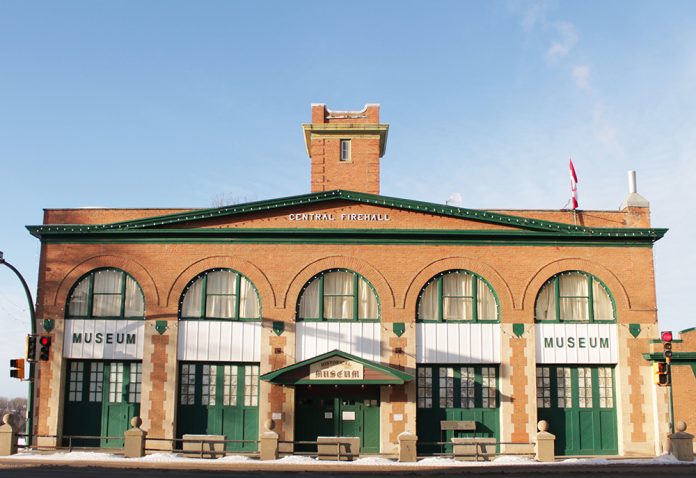The Prince Albert Historical Society, in partnership with the City of Prince Albert, care for and program the four museums located throughout the City of Prince Albert- Evolution of Education, Rotary Museum of Police and Corrections, the John and Olive Diefenbaker Museum, and the largest, the Historical Museum. Each museum has its own history. The Society is a volunteer based organization that has been in existence, in some form, since the late 1800’s. If you are interested in volunteering, please contact Michelle at the Historical Museum.
Evolution of Education
This museum started as a one room schoolhouse NE of the City in the Claytonville area. The school was built in 1920 and used until 1963. It was moved its present location and transformed into a museum by the University Women’s Club in the 1980s, operations were officially transferred to the Historical Society in 2006.
Rotary Museum of Police and Corrections
The building in which the museum is housed was originally the guardroom of the barrack complex for “F” Division headquarters of the North West Mounted Police, built in Prince Albert in 1888. This is the only building salvaged from the complex, which stood on 53 acres of land located on the west hill of Prince Albert. Bordered on the north by what is now 20th Street, on the east by 7th Avenue, on the south by 24th Street, and on the west by 9th Avenue. Locals will recognize this site as comprising most of the land now designated as the Peter Ballantyne Urban Reserve, the first urban reserve ever established in Canada.
In the early 1980’s, a group of law enforcement individuals transformed the building into what you see today- a museum that houses history of the Prince Albert City Police, Provincial Correctional Centre, Saskatchewan Provincial Police, Royal Canadian Mounted Police and the Correctional Service of Canada- Saskatchewan Penitentiary.
John and Olive Diefenbaker Museum, National Historic Site
This house was built in 1910 for Mr. Jaffray, who was the Imperial Bank Manager. In 1947, John and Edna Diefenbaker purchased the house and together lived in the house until Edna’s death in 1951. In 1953, when John married Olive Freeman they live there until 1957, when Diefenbaker was elected Prime Minister. At that point they moved to Ottawa but rented the house in Prince Albert. In 1975, the Diefenbaker’s gave the house to the City of Prince Albert to be used as a museum. In 1983, the Diefenbaker House museum was opened. In January 2018, the Diefenbaker House was designated a National Historic Site and renamed the John and Olive Diefenbaker Museum.
Historical Museum
The Historical Museum, many people will remember it as the Central Firehall, was built in 1911-12 and used as a fire until 1975. In 1977, the Historical Museum opened to the public operated by the Prince Albert Historical Society. The museum houses the Bill Smiley Archives, the main museum storage, and three floors of display area. During the summer months the tea room is open- this year by Bird’s Kitchen Catering. The summer display is called Miijim: Traditional Foods of the Lake of the Woods Anishinaabeg. It focuses on the uses and some stories of traditional food like fish, berries, and wild game, as well as the seasonality of foods. This exhibit is available until August 31, 2018.
The Summer hours for the museums are 9am to 5 pm 7 days a week. The Historical Museum is open until 8pm on Thursdays.
Walking tours are available through the summer months on Thursdays and Sundays, however one can be arranged at your convenience. Tours leave the Historical Museum at 11am and 2pm. Cost is $2/person.
Admission for each museum is $4 for adults (12 and over), $2 for children aged 6-12, and under 6 are free. Day passes are available at all museums if you wish to visit more than one venue. Please check www.historypa.com for rates. At the satellite museums (Education, Police and Diefenbaker) cash or cheque ONLY. Credit and debit is available at the Historical Museum.
On the second floor of the Historical Museum, overlooking the North Saskatchewan River is a beautiful little restaurant, open Monday to Friday from 11 to 3. Bird’s Kitchen is serving Indigenous foods throughout the summer months. Admission costs do not apply.


